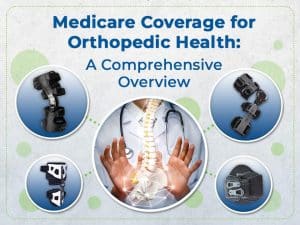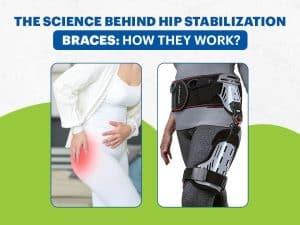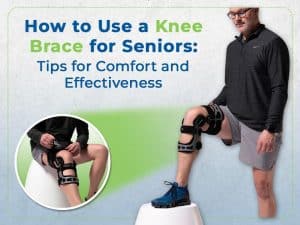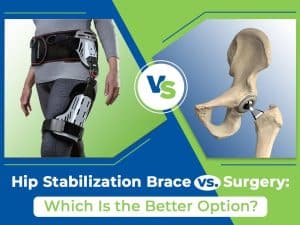Knee arthritis is a common condition that affects millions of people worldwide. In severe cases, arthritis may require surgery to alleviate symptoms and restore joint function. However, recovery after arthritis surgery can be a long and challenging process. One tool that can aid in post-surgery recovery is a knee brace. In this article, we’ll explore how knee braces can help arthritis patients recover after surgery, the different types of knee braces available, and tips for choosing and using knee braces during recovery.
Why use a knee brace after arthritis surgery?

Why use a knee brace after arthritis surgery?
Knee braces are a useful tool in aiding recovery after arthritis surgery. They can provide support to the knee joint, limit movement, and help reduce pain and swelling. Here are some specific ways that knee braces can aid in post-surgery recovery:
- Stability and support: Knee braces provide support to the knee joint, helping to keep it stable during movement. This can be particularly important during the early stages of recovery when the knee may be weaker and more prone to injury.
- Pain relief: Knee braces can help reduce pain and inflammation by limiting movement and providing compression to the joint.
- Improved range of motion: By providing support and stability, knee braces can help improve knee range of motion during recovery.
- Protection from further injury: After surgery, the knee joint may be more vulnerable to injury. A knee brace can help protect the joint from further injury during recovery.
Types of knee braces for post-surgery recovery

Types of knee braces for post-surgery recovery
There are several types of knee braces available for post-surgery recovery. Here are some of the most common types:
- Knee immobilizers: Knee immobilizers are designed to keep the knee joint from bending or straightening. They are typically used in the early stages of recovery to provide maximum stability to the joint.
- Knee sleeves: Knee sleeves are made of a stretchy, compressive material and are designed to provide compression to the knee joint. They can be useful for reducing pain and swelling during recovery.
- Hinged knee braces: Hinged knee braces are designed to provide support and stability to the knee joint while still allowing for some movement. They are typically used during the later stages of recovery when the knee is stronger and more stable.
- Unloader knee braces: Unloader knee braces are designed to shift weight away from the arthritic portion of the knee joint. They can be useful for reducing pain and improving knee function during recovery.
- Functional knee braces: Functional knee braces are designed to provide support and stability to the knee during physical activity. They are typically made of lightweight materials and can be adjusted for a custom fit.
Choosing the right knee brace for post-surgery recovery
Choosing the right knee brace for post-surgery recovery can be a daunting task. Here are some factors to consider when selecting a knee brace:
- Type of surgery: The type of surgery you had may dictate the type of knee brace you need. For example, if you had knee replacement surgery, you may need a knee immobilizer in the early stages of recovery to provide maximum stability to the joint.
- The severity of arthritis: The severity of your arthritis may also play a role in determining the type of knee brace you need. If you have severe arthritis, an unloader knee brace may be a better option to help shift weight away from the arthritic portion of the joint.
- Level of activity: Your level of activity during recovery may also impact the type of knee brace you need. If you plan to be relatively inactive during recovery, a knee immobilizer may be a good option. If you plan to engage in light activity, a hinged knee brace may be a better choice.
- Comfort: Finally, it’s important to choose a knee brace that is comfortable to wear. If a knee brace is too tight or too loose, it can cause discomfort and even exacerbate pain and inflammation.
Read More: Coping with Chronic Knee Pain: Knee Braces for Older Adults
Using a knee brace during post-surgery recovery
Using a knee brace correctly during post-surgery recovery is key to ensuring its effectiveness. Here are some tips for using a knee brace during post-surgery recovery:
- Follow your doctor’s instructions: Your doctor will likely provide specific instructions for using a knee brace during recovery. Be sure to follow these instructions closely to ensure the best possible outcome.
- Wear the knee brace as directed: It’s important to wear the knee brace as directed by your doctor or physical therapist. This may involve wearing the brace for certain periods of time each day or during specific activities.
- Keep the knee brace clean: Be sure to keep your knee brace clean and dry to prevent infection and irritation. Follow the manufacturer’s instructions for cleaning the brace, and avoid using harsh chemicals or detergents.
- Gradually increase activity: As your recovery progresses, you may be able to gradually increase your level of activity. Be sure to follow your doctor’s instructions and gradually increase activity over time to avoid re-injury.
- Check for proper fit: Regularly check the fit of your knee brace to ensure it is still providing the proper level of support and stability. If the brace is too loose or too tight, it may need to be adjusted or replaced.
Potential drawbacks of knee braces
While knee braces can be a useful tool for post-surgery recovery, there are some potential drawbacks to be aware of. Here are some things to consider:
- Skin irritation: Some people may experience skin irritation or rashes from wearing a knee brace. This is often due to friction or sweating. Be sure to keep the brace clean and dry to minimize the risk of skin irritation.
- Reduced muscle strength: Over-reliance on a knee brace can lead to reduced muscle strength and stability over time. It’s important to use the brace as directed and gradually decrease its use as your recovery progresses.
- Limitations on movement: Some types of knee braces, such as knee immobilizers, can limit movement and make daily activities more difficult. It’s important to balance the benefits of the brace with any limitations it may cause.
In Conclusion
Knee arthritis surgery can be a challenging and lengthy recovery process. However, using a knee brace can be a valuable tool in aiding post-surgery recovery. By providing support and stability, limiting pain and swelling, and improving range of motion, knee braces can help patients recover more quickly and effectively. When choosing a knee brace for post-surgery recovery, consider the type of surgery, severity of arthritis, level of activity, and comfort. And remember to follow your doctor’s instructions and use the brace as directed to ensure the best possible outcome.
Our knee braces are universal in size and feature multiple range-of-motion positions to offer support and comfort to restore your mobility. If you’re not sure what product is right for you or if you’re eligible for insurance coverage, Artik Medical Supply will provide the guidance you need. We can even communicate with your doctor to determine the best knee orthopaedic brace for you. Contact us today to check for insurance coverage.
Article Key Phrases
- Knee brace for arthritis recovery.
- Knee brace usage tips for arthritis patients.
- Knee brace options for arthritis patients.
- How knee braces aid in arthritis surgery recovery.
- Choosing the right knee brace for arthritis surgery.








